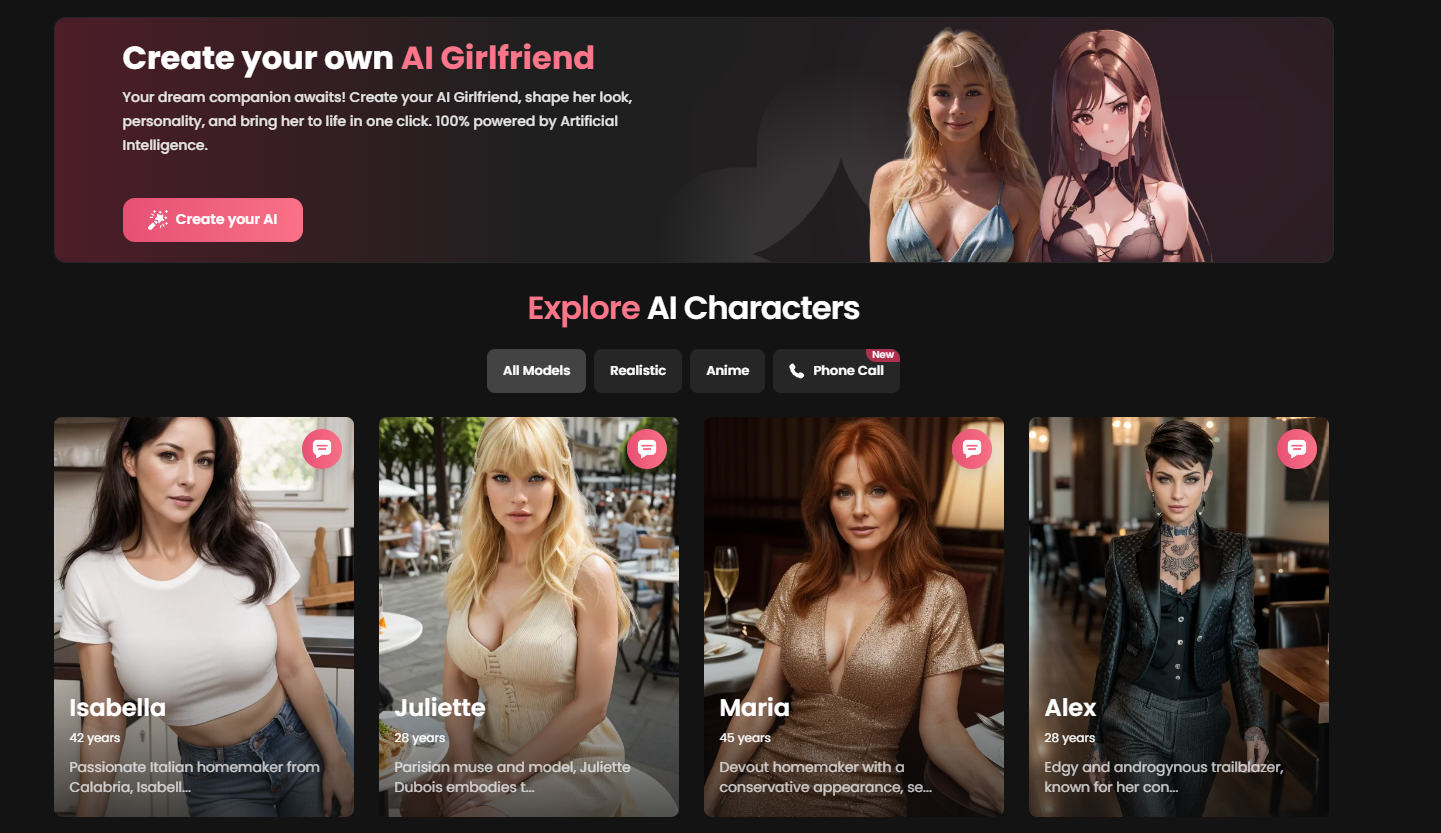Although artificial intelligence (AI) has revolutionized the lingerie industry with its advanced design and production capabilities, it is facing major backlash for promoting unrealistic body standards through the use of Ai cameltoe. This controversial trend involves designing undergarments to enhance the appearance of a visible crease between a woman’s legs.
While some argue that it empowers women to embrace their bodies, others criticize it for sexualizing and objectifying them. The debate surrounding this practice continues to divide opinions in the fashion world.
The Birth of AI Cameltoe
AI cameltoe refers to the use of computer algorithms to generate images or videos that simulate the appearance of a visible crotch bulge beneath tight-fitting clothing. The term first gained widespread attention in 2023 when Candy.ai unveiled their new line of lingerie featuring models with digitally enhanced cameltoes.
This move sparked outrage among consumers and industry experts alike. Many argued that it was promoting unhealthy body standards by glorifying an unrealistic and sexualized ideal. Others saw it as yet another way for companies to cash in on women’s insecurities.
However, Candy.ai defended their decision by stating that they were simply catering to customer demand. According to their market research, a large number of customers preferred seeing models with visible cameltoes as it helped them visualize how certain styles would look on their own bodies.

Candy.ai: Pros & Cons
Pros:
- Opens up job opportunities for diverse body types that may not fit the traditional beauty standards of the industry.
- Can be a useful tool for people with body dysmorphia or other body image issues, as it allows them to see themselves reflected in models.
- Allows for more accurate sizing and fit suggestions, leading to reduced returns and increased customer satisfaction.
- Provides customers with a realistic representation of how lingerie would fit on their bodies. It can be an intoxicating feeling to engage in mistress chatting with a dominant woman who knows how to control and tease you.
Cons:
- Promotes an unrealistic and sexualized beauty standard by digitally enhancing models’ bodies.
- Fuels insecurities among women by creating unattainable expectations of how their bodies should look in lingerie.
- Risks objectifying and dehumanizing models by reducing them to mere computer-generated images instead of real individuals with unique features and flaws.
- Raises concerns about privacy and consent, as companies may use personal data collected from customers to create these AI cameltoe images without their knowledge or permission.
Seduced.ai: The Controversy Continues
As if Candy.ai’s move wasn’t enough to stir the pot, another company – Seduced.ai – soon followed suit. However, instead of simply enhancing cameltoes on existing images, they took it one step further by using AI technology to generate entirely new images.
Seduced.ai claimed that this would allow them to create more diversity in their models’ appearances while still catering to customers who preferred visible cameltoes. While some saw this as a positive step towards inclusivity, others argued that it was just another way for companies to exploit women’s bodies for profit.
Critics raised concerns about the ethical implications of using AI-generated images that may not accurately reflect reality. They argued that this could lead to even more unattainable beauty standards being perpetuated.
Seduced.ai: Pros & Cons
Pros:
- May be more cost-effective for companies in the long run, as they would no longer need to hire multiple models for different body types/sizes.
- Promotes diversity and inclusivity by using AI technology to create a wider range of images featuring models of different races, sizes, and shapes.
- Can reduce the pressure on models to conform to traditional beauty standards, as they may not have to physically alter their bodies or go through strenuous diets/exercise regimes.
- Provides an opportunity for brands to showcase their products on models with diverse body types, which can help customers feel represented and included.
Cons:
- Has the potential to further objectify and dehumanize women’s bodies by commodifying them and reducing them to mere digital assets.
- Fuels concerns about authenticity and transparency in the fashion industry, as it blurs the line between what is real and what is fake.
- Risks promoting unrealistic body standards by using digitally generated images that may not accurately reflect reality.
- Raises ethical concerns about the use of AI technology in creating these images without proper consent or compensation for the individuals being portrayed.

PromptChan: The Other Side of the Coin
While Candy.ai and Seduced.ai have received most of the attention when it comes to AI cameltoe controversy, there is another player in this game – PromptChan. Unlike its competitors, PromptChan does not use AI technology or digitally enhanced images at all.
Instead, they have taken a different approach by hiring real-life models with natural cameltoes. This move has been met with mixed reactions – some applauding them for promoting body positivity and others criticizing them for exploiting women’s bodies.
PromptChan’s founder, Lily Chan, has defended their decision by stating that they are simply showcasing the natural beauty and diversity of women’s bodies. They also provide a platform for models to share their stories and experiences with body shaming and societal expectations.
PromptChan: Pros & Cons
Pros:
- Gives a voice to models who may not fit traditional beauty standards but still have unique stories and experiences to share.
- Could pave the way for more inclusive representation in the fashion industry.
- Helps break stereotypes and challenge societal norms surrounding women’s bodies.
- Promotes body positivity and diversity by featuring real-life models with natural cameltoes, instead of digitally enhanced images.
Cons:
- Raises concerns about consent and privacy, as some models may feel pressured to show their natural cameltoes in order to get hired by companies like PromptChan.
- Might be seen as just another marketing tactic to grab attention and boost sales, rather than promoting genuine body positivity initiatives. Until now, finding a compatible partner through online dating has been a daunting task, but with the advancements in technology and the introduction of an innovative AI-based matchmaking system, your perfect match is just a click away.
- Can fuel insecurities among women who do not naturally have visible cameltoes, leading them to believe that there is something wrong with their bodies.
- Risks objectifying and sexualizing models’ bodies by focusing solely on their cameltoes rather than their individual features or personalities.
The Future of AI Cameltoe in the Lingerie Industry
As technology continues to advance, it is safe to assume that we will see even more AI-driven innovations in the lingerie industry. Some experts predict that this could lead to a completely digitalized market where customers can try on different styles virtually before making a purchase.
However, others argue that we must carefully consider the potential ramifications of such advancements on our society. Will it lead to further perpetuation of unrealistic beauty standards and objectification of women’s bodies? Or will it pave the way for a more inclusive and diverse representation in the fashion industry?
Only time will tell how AI cameltoe controversy unfolds, but one thing is for sure – it has sparked a much-needed discussion about body image, beauty standards, and ethical implications of technology in the fashion world.
To Recap
The use of AI cameltoe may be controversial, but it has undoubtedly brought to light many important issues surrounding body positivity and inclusivity in the lingerie industry. As we move towards a more technologically advanced future, it is crucial that we consider the impact these innovations have on our society as a whole.
Whether you are team Candy.ai or PromptChan, one thing is certain – there is no easy solution to this debate. However, by continuing to engage in meaningful discussions and promoting genuine body positivity initiatives, we can strive towards a more inclusive and accepting society for all.

Candy.ai
✔️ Generate AI Porn Images
✔️ Listen To Voice Messages
✔️ Fast Response Time

Seduced.ai
✔️ Generate AI Models
✔️ Save & Reuse Girls
✔️ 300 Images Per Month

PromptChan.ai
✔️ Completely Free To Test
✔️ Edit Your AI Models
✔️ Make Porn Images (no limit)
What is AI cameltoe and how does it work?
AI cameltoe refers to the use of artificial intelligence technology to enhance and alter images in a way that creates the appearance of a visible fold or crease between a woman’s labia majora. This effect is achieved through computer algorithms that analyze and manipulate the shape and position of pixels within an image. AI cameltoe has been criticized for perpetuating unrealistic beauty standards and objectifying women.
Can AI technology accurately detect and classify cameltoe in images?
Currently, AI technology has shown promising results in detecting and classifying cameltoe in images. With the use of machine learning algorithms and advanced computer vision techniques, AI systems can accurately recognize and differentiate between a normal image and one with cameltoe. However, it is important to note that the accuracy of this technology heavily relies on the training data provided to the system. As more diverse and comprehensive datasets are used for training, we can expect further improvements in AI’s ability to identify cameltoe in images.
How can businesses use AI cameltoe detection for marketing and product development purposes?
Businesses can use AI cameltoe detection to gather data on which types of products and clothing styles are most popular among consumers. This information can then be used for targeted marketing campaigns and product development strategies. AI technology can help businesses identify potential issues with their current designs and make adjustments accordingly to improve customer satisfaction.
